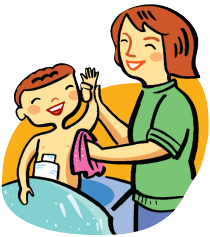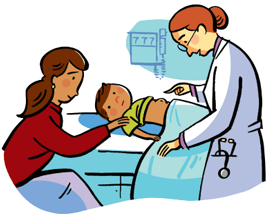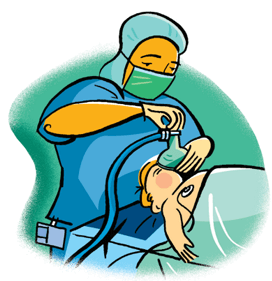After your child is discharged and goes home, he might still be groggy and should take it easy for the day.
Once your child is home, his or her diet should be restricted to liquids, such as water, Gatorade®, Popsicles® or Kool-aid® for a couple of hours to ensure his or her stomach is settled after the surgery and the car ride home. If your child does well with liquids after a couple hours, he or she may try a light diet and soft foods, such as applesauce, soup, toast, bananas, rice or hot cereal. Avoid greasy foods that stay in the stomach a long time, such as pizza and fast food. Your child may resume a normal diet the next day.
Pain Medication
Your child should take Tylenol® or Motrin® 4 hours after the surgery, which will help with discomfort when the anesthesia wears off. These medications are rarely needed after 2 days. If your child is over 5 years of age, your surgeon will give you a prescription for Tylenol® with codeine elixir, in the event that your child needs additional pain medication. You do not need to fill this prescription until you see how your child is doing.
 Bathing
Bathing
- The incision should not be soaked for about 5 days.
- If your child is in diapers, he or she will need “wash cloth” baths for 4 to 5 days.
- If your child is toilet trained, he or she will need to take wash cloth baths for 4 to 5 days, but may have a brief shower after 2 days. If the cotton dressing gets wet, you may remove it and replace it with a band-aid.
Activity
Following the operation, activity needs to be somewhat restricted.
- Your surgeon will determine when your child may resume normal activities.
- Your child may return to school as soon as the next day and certainly within 2 or 3 days of the surgery.
- No bike riding for 1 week.
- Participation in contact sports and gym class is not permitted until the follow-up appointment with the surgeon (usually 4 to 6 weeks).
- Swimming is permitted 1 week after surgery (but no “cannon balls” or belly flops).











 Bathing
Bathing